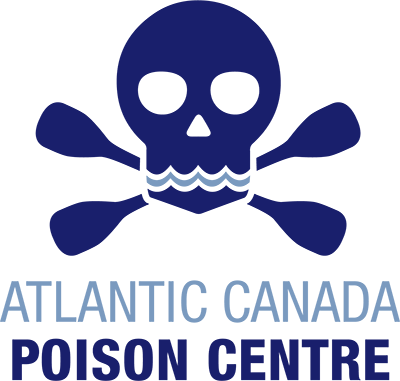
Atlantic Canada Poison Centre
Antidote Kit Manual
Dimaval
(RS)-2,3-Bis(sulfanyl)propane-1-sulfonic acid sodium salt 1 H20, 2,3-dimercaptopropanesulfonic acid, DMPS, Unithiol
Indications
- Acute poisoning due to inorganic arsenic or mercury; may be of benefit in additional, selected metal toxicities (Contact the Atlantic Canada Poison Centre)
Dosage
- 3 - 5 mg/kg IV (preferred) or IM every 4 hours.
- Each vial contains 250 mg/5 mL of sodium salt.
- Once the patient's gastrointestinal and cardiovascular systems have stabilized, consider switching to oral chelation agent. Contact the Atlantic Canada Poison Centre for further information.
- Duration of treatment will depend on the evolving clinical picture. Consultation with a toxicologist is strongly recommended. Patients with impaired renal function may require concurrent dialysis if Dimaval is required.
Administration
-
IV direct: Administer undiluted at a rate of 1 mL/minute. Do not administer into a running IV. Clamp tubing, flush with sodium chloride 0.9%, administer Dimaval, flush with sodium chloride 0.9%. Resume IV.
-
Intermittent Infusion via syringe pump: Slower infusion rates may be appropriate if there is hemodynamic instability to avoid post-injection transient hypotension. Can administer dose undiluted over 20 minutes via syringe pump.
- IM: Administer undiluted via deep injection at different sites.
Compatibility, Stability
- Dimaval must not be mixed with infusion solutions or administered concurrently with other drugs into the same tubing.
- Trace elements should not be administered while the patient is receiving Dimaval. The effectiveness of both products may be reduced. Separating the administration of these products will not prevent this interaction.
Potential Hazards of Administration
- Allergic reactions, tremor, fever, shivers or skin reactions (including Stevens-Johnson syndrome) have infrequently been reported.
- Asthma attacks in patients with asthma during or immediately after injection.
- Hypotension, nausea, dizziness and weakness (more common after rapid IV injection; 5 - 10 minutes after injection).
- Infrequent adverse events: transient transaminitis, pain at injection site, unpleasant hydrogen sulphide odour, 50% reduction in leukocyte count, changes in taste, chest discomfort, abdominal discomfort and loss of appetite.
- Kidney failure in mercury poisoning secondary to mobilization of mercury by Dimaval.
- Mineral deficiency (especially zinc and copper). Occurs primarily during long-term treatment.
Miscellaneous
- Each 5 mL ampoule contains 271.4 mg (RS)-2, 3-Bis (sulfanyl) propane-1-sulfonic acid sodium salt, 1 H20 corresponding to 250 mg (RS)-2, 3-Bis (sulfanyl) propane-1-sulfonic acid sodium salt.
- This medication is provided via the Special Access Program, Health Canada. Appropriate form must be filled out.
References…
Aposhain, V. H., Maiorinoa, R. M., & Gonzalez-Raminirez, D. (1995). Mobilization of heavy metals by newer, therapeutically useful chelating agents. Toxicology 97, 23-38.
Bernhoft, R. A. (2012). Mercury toxicity and treatment: A review of the literature. Journal of Environmental and Public Health, 2012
Fergusson, J., Malecky, G., & Simpson, E. (1997). Lead foreign body ingestion in children. Journal of Paediatric Child Health, 33, 542-544.
Gonzalez-Ramirez, D., Zunguel-Charels, M., Narro-Juarez, A., & Molina-Recio, Y. (1998).
DMPS (2,3-dimercaptopropane-1-sulfonate, dimaval) decreases the body burden of mercury in humans exposed to mercurous chloride. The Journal of Pharmacology and Experimental Therapeutics, 287, 8-12.
Kosnett, M.J. (2013). The role of chelation in the treatment of arsenic and mercury poisoning. Journal of Medical Toxicology, Volume 9, 347-354.
Micromedex, T. H. A. (2014). Micromedex health care systems. Retrieved from http://www.micromedexsolutions.com
Olson, K. R. (2007). Poisoning & drug overdose (Sixth ed.). New York: McGraw Hill.
Ruprect, J. (2011). Bjorklund nutrition: dimaval-scientif product monograph online. Retrieved from http://www.bjorklundnutrition.net/2011/10/dimaval
Smith, S. (2013). The role of chelation in the treatment of other metal poisonings. Journal of Medical Toxicology, Volume 9, 355- 369.


